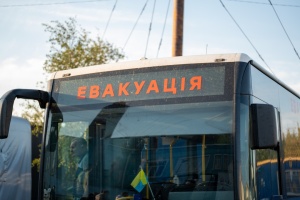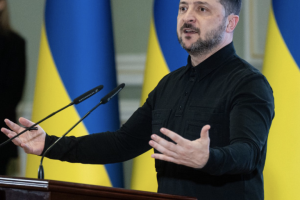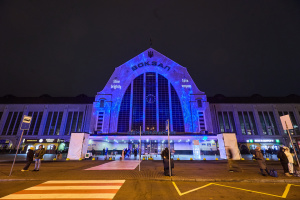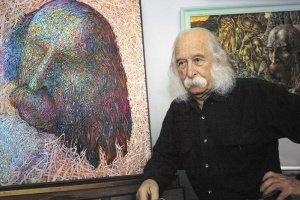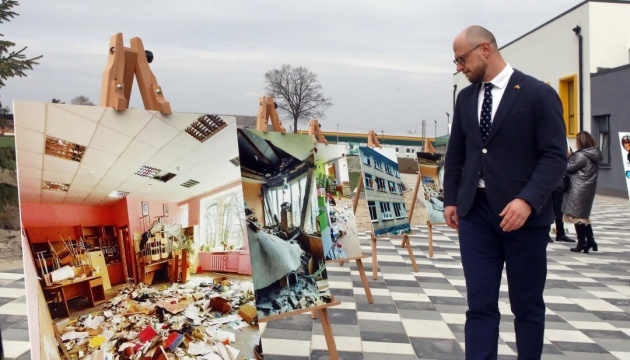
Restoring Ukraine: "We will rebuild school in Avdiivka as well!"
Only in recent days, the Mykhailo Boichuk Academy of Decorative and Applied Arts and Design in Kyiv has been destroyed, and the school of the Velykopysarivska community in Sumy region...
In total, more than 3,000 educational buildings in Ukraine have been seriously damaged or destroyed as a result of Russia's criminal aggression. But this is not a reason to give up: in difficult wartime conditions, Ukrainian children continue to study, and joint efforts with international partners are restoring lyceums and gymnasiums in Ukraine where the security situation allows.
Meanwhile, applications for participation in the architectural competition "School of the Future for Ukraine" are being accepted, which is being held at the initiative of the Lithuanian government in partnership with the State Agency for the Restoration and Development of Infrastructure of Ukraine with the assistance of the Ministry of Education and Science. Ukrinform talked to the organizers and expert architects about the project's progress. While noting the urgency of reconstruction and the undeniable benefits of such a competition, practitioners warn against high expectations of typical projects.
REPRESENTATIVES OF EUROPE, ASIA AND AFRICA WANT TO JOIN THE REBUILDING OF UKRAINIAN SCHOOLS
The School of the Future for Ukraine competition will accept project proposals until May 23. An exhibition of the submitted works is scheduled for June, and the winners are to be announced in July. "We are pleased with the interest in the competition," comments project manager Mariana Varkalienė, "Moreover, we are pleasantly surprised that this interest is not limited to architects from Europe, but also reaches, for example, Asia and Africa. Currently, about half of the registered participants are architects from Ukraine, and about half from other countries."
The goal of the School of the Future for Ukraine architectural competition is to develop a high-quality adaptive [i.e., capable of adapting to specific conditions] school project that will help build modern, inclusive, and resilient educational institutions. First, the jury will determine the winners of the draft projects: prizes of 12,000 euros, 10,000 euros, and 8,000 euros are promised for 1-3 places, respectively. The winner will receive EUR 300,000 for final development. The finished technical design of the school will be provided free of charge to Ukrainian communities and partners interested in the construction.
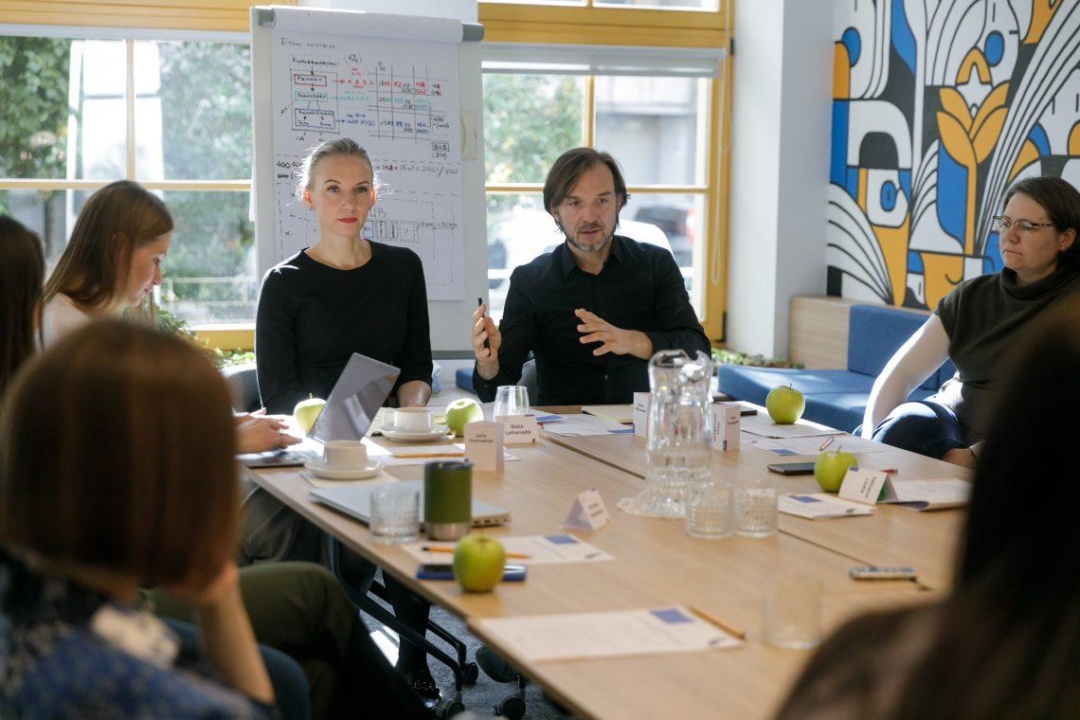
Ruta Leitanaite, creative director of the competition, member of the Council of the Lithuanian Association of Architects, says: "The idea of creating an adaptive project for school construction through an open international architectural competition arose for several reasons. Among them is the desire to once again convey to the international community the urgent need to rebuild Ukrainian education, as well as its scale. International competitions always attract a larger audience than a simple contracting by a customer.
Combining Ukrainian expertise and foreign experience is another motivation for the competition, which was embodied in one of its conditions - the creation of joint teams for participation. And perhaps most importantly, architectural competitions are a recognized tool that ensures transparency of the process, involvement of a highly qualified jury and, as a result, a high-quality, unique result."
Ruta Leitanaite emphasizes: "Representatives of the Central Agency for Project Management, jury member Arturas Žarnovskis, and other team members walked through the ruins of Ukrainian schools. They saw with their own eyes the bombed kindergartens, talked to parents who had nowhere to take their children, to graduates who no longer had a school to celebrate their graduation... Some of these schools have already been rebuilt from the ruins."
The organization of joint work of architects from Ukraine and abroad in a team can take different forms. The main thing is that the minimum number of team members must be met: at least one architect who has the right to practice in Ukraine and one of his colleagues with the right to practice outside of Ukraine.
ADAPTIVE TECHNICAL DESIGN AS A CHANCE TO START CONSTRUCTION FASTER
The jury of the School of the Future for Ukraine competition includes foreign architects. Victoria Blazhene from Lithuania represents a company that specializes in the design of modern schools and kindergartens, and is engaged in both reconstruction and new construction. She and her colleagues are currently working on a project for two educational buildings in Bucha, Kyiv region. Another is architect Carl Backstrand from Sweden. He is called one of the best specialists in designing buildings that take into account certain environmental conditions. And Rolandas Palekas is a professor at Vilnius Technical University and the founder of an architectural studio whose portfolio of completed projects includes the Vilnius University Library and the Lithuanian Academy of Music and Theater complex. The works of Helen Sandman from Finland were presented at the Venice Architecture Biennale.
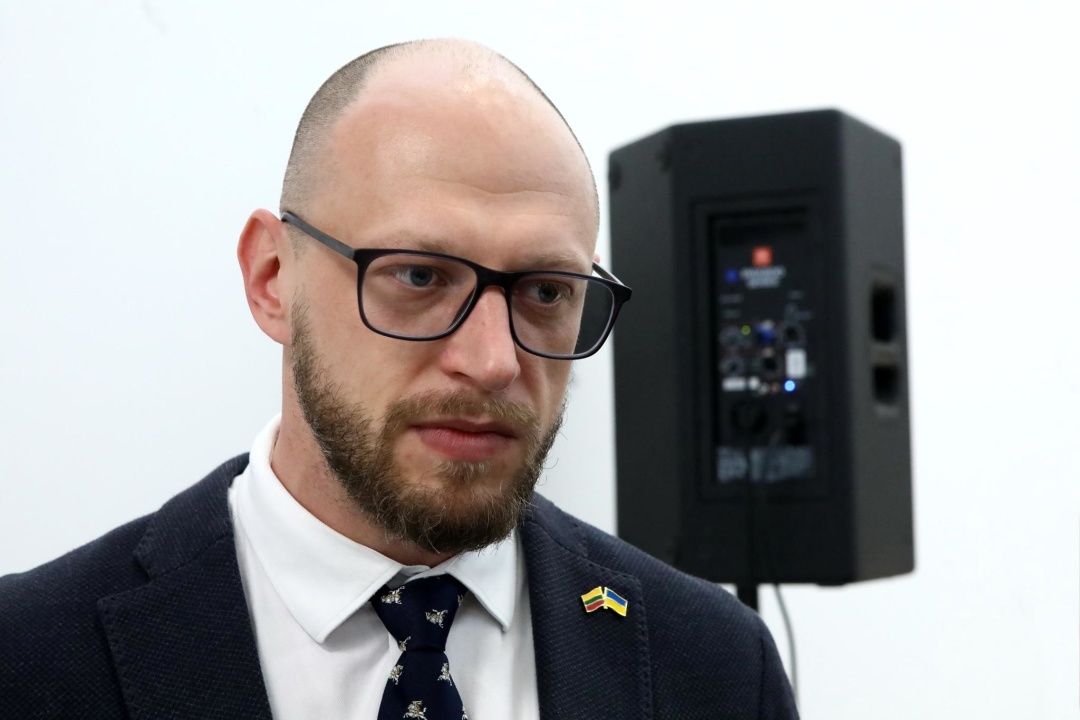
Arturas Žarnovskis, Head of the Co-create Future of Ukraine (CPMA) program, is the chairman of the jury of eight professionals. As a representative of Lithuania, he has been involved in the implementation of multilateral projects to restore Ukraine since 2014. Before Russia's full-scale invasion of Ukraine, he led a Lithuanian-funded project to reconstruct school #2 in Avdiivka, which was opened on September 1, 2021, and destroyed by Russian weapons on February 25, 2022. "This does not demotivate, but rather encourages us to rebuild. We will rebuild a school in Avdiivka as well!" says Artūras Žarnovskis.
Ukrinform recorded the comments of the head of the Co-create Future of Ukraine program in Borodyanka, Kyiv region, where in a little over a year, Lithuanian funds have been used to restore Lyceum No. 1, which was damaged by 70 percent during the temporary Russian occupation. The interlocutor says that the international competition to create an adaptive technical design for new Ukrainian schools is a chance for small communities to attract the best professional architects in wartime.
Such a project, Arturas Žarnovskis says, will save communities time and money: it will allow them to start construction faster and return children to offline learning. "A ready-made adaptive technical project will be the basis for 80 percent of the reconstruction," he says. "And this does not mean that, like in Soviet times, all schools will be the same.
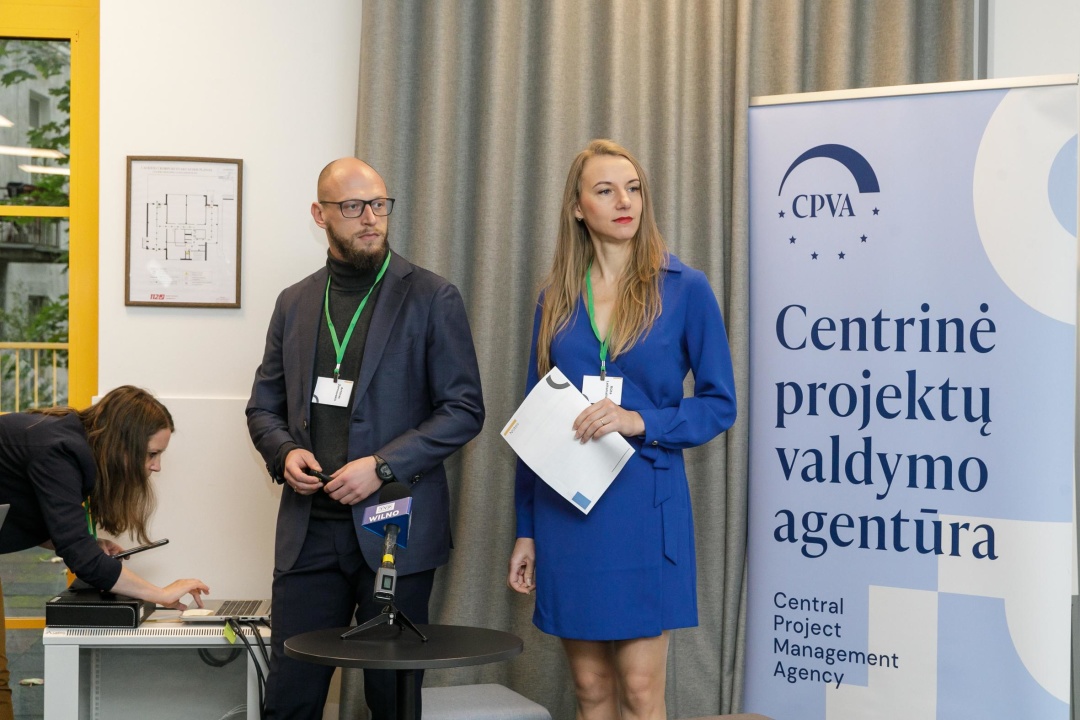
"Unfortunately, the war has made it possible to see new opportunities where it would have been better not to: to build more modern, safer, more comfortable educational facilities in place of bombed or hopelessly damaged ones," comments Ruta Leitanaite. "At the beginning of the project, we organized a two-day workshop for educators and architects, as well as representatives of the public sector. This is how we formed a vision of what kind of school is expected in Ukraine. The new school should become a center of education and a center for the community: accessible, inclusive, safe. If the school is designed to meet the needs of children and the community, if it is safe, comfortable and cozy to study, play sports or spend leisure time within its walls, it will certainly become a center of attraction for the new generation and the entire community."
THE PROJECT WILL BE ADAPTED FOR EACH SCHOOL
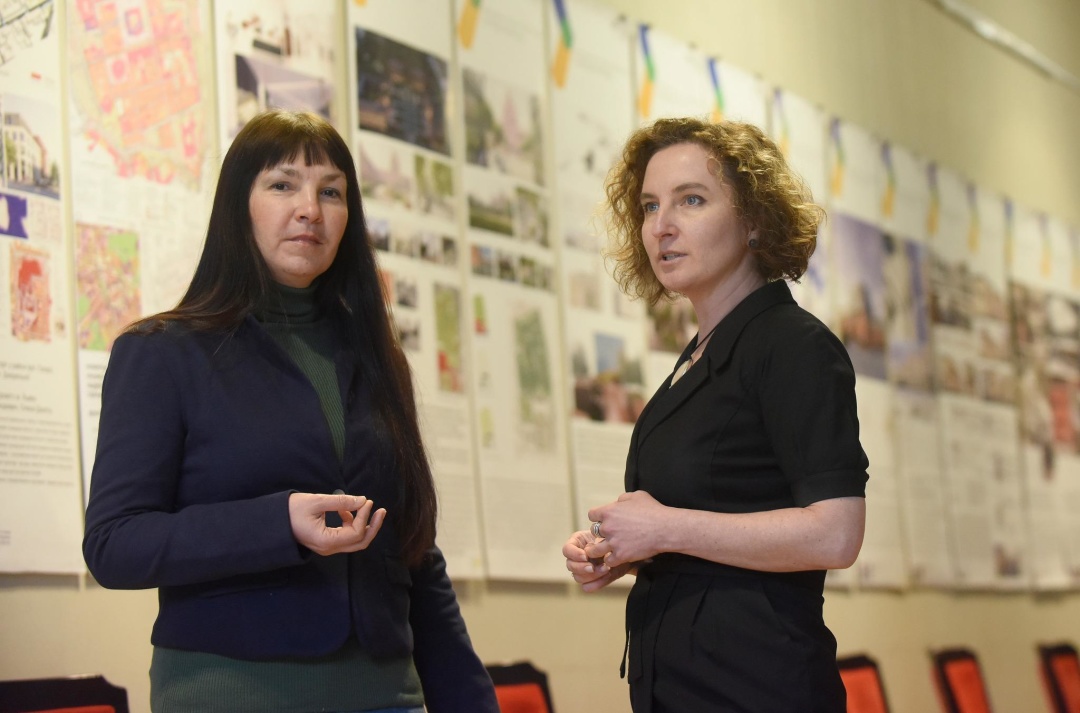
Experienced Ukrainian expert architects Anna Kyriy from Kyiv and Olha Podushkina from Dnipro note that the existence of a standard project should not be overestimated, even if it is called adaptive. "When it comes to architecture, it's about uniqueness," says Olha Podushkina, "Each school stands on a site that is not identical to the terrain of another institution: it has a different relief, different geological conditions, different dimensions.
All this requires an individual project. The standard one will have to be adapted. For example, the seismicity on the MSK-64 macroseismic scale in Sumy is 5 points, in Kyiv - 6, and in Odesa - 8. So the stability of supporting structures must be calculated individually everywhere. According to experts, it will be necessary to spend from 30 to 90% of the initial amount to adjust the project to the conditions of a particular site.
Olha recalls that typical projects were typical of the postwar period in the Soviet Union, when the Khrushchevs appeared. Back then, mostly five-story buildings were built on free large areas on the outskirts of cities. Schools were incorporated into the surrounding buildings, which were recorded in the master plans of settlements, meaning that in most cases, their reconstruction projects will occupy their specific territories. "I said at all the interviews in Vilnius: it is impossible today to develop a standard project for unique sites that could be implemented in most cases," says Olha Podushkina.
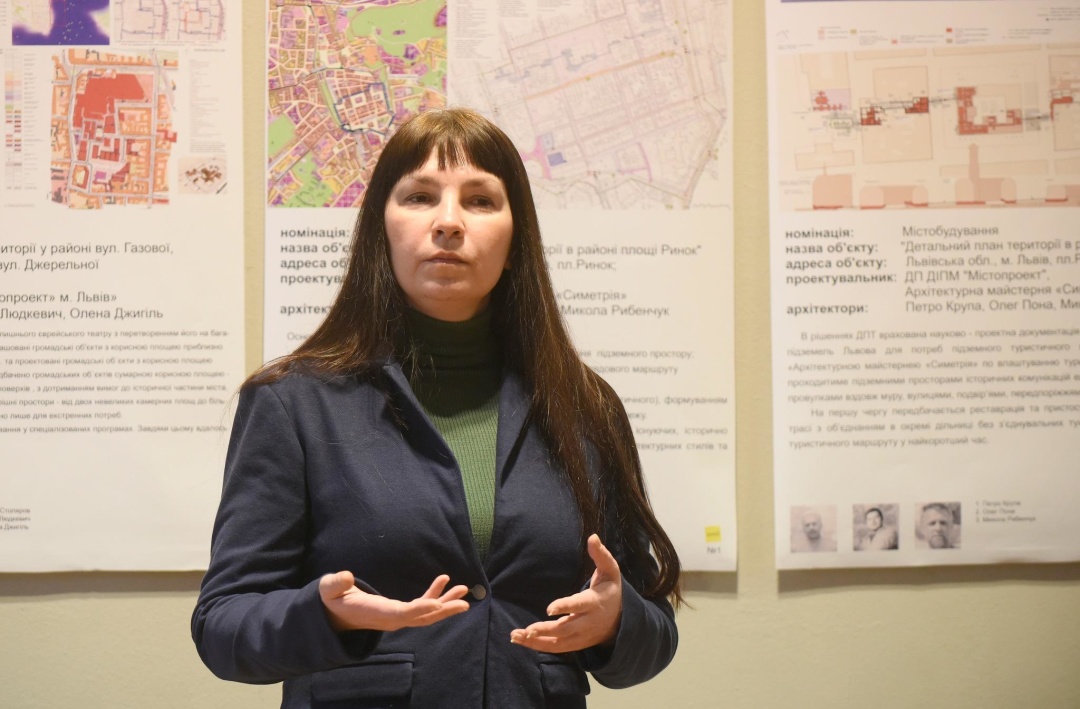
According to the expert, we should strive to develop "plastic" projects so that they are formed from individual units (elements, modules) that can be "assembled" like a construction set. Such projects will be cheaper to adapt later. They are more realistic for a particular construction. "It is appropriate to create standard elements, not the entire building. Germany does it, Austria does it," the architect comments, noting the value of international cooperation in the School of the Future for Ukraine competition.
Olha Podushkina was a member of the jury of the architectural project "Reset 2022: Energy Efficient, Green Schools," which was implemented by the Association of Ukrainian Cities in cooperation with the German Society for International Cooperation (GIZ) GmbH. Back then, they conducted a study of the sites where they planned to build schools. Its results confirmed that there are no equal conditions. Another point: communities did not want to move the school to a different location than where it was located. The interviewed residents wanted part of the destroyed building to be preserved or reconstructed.
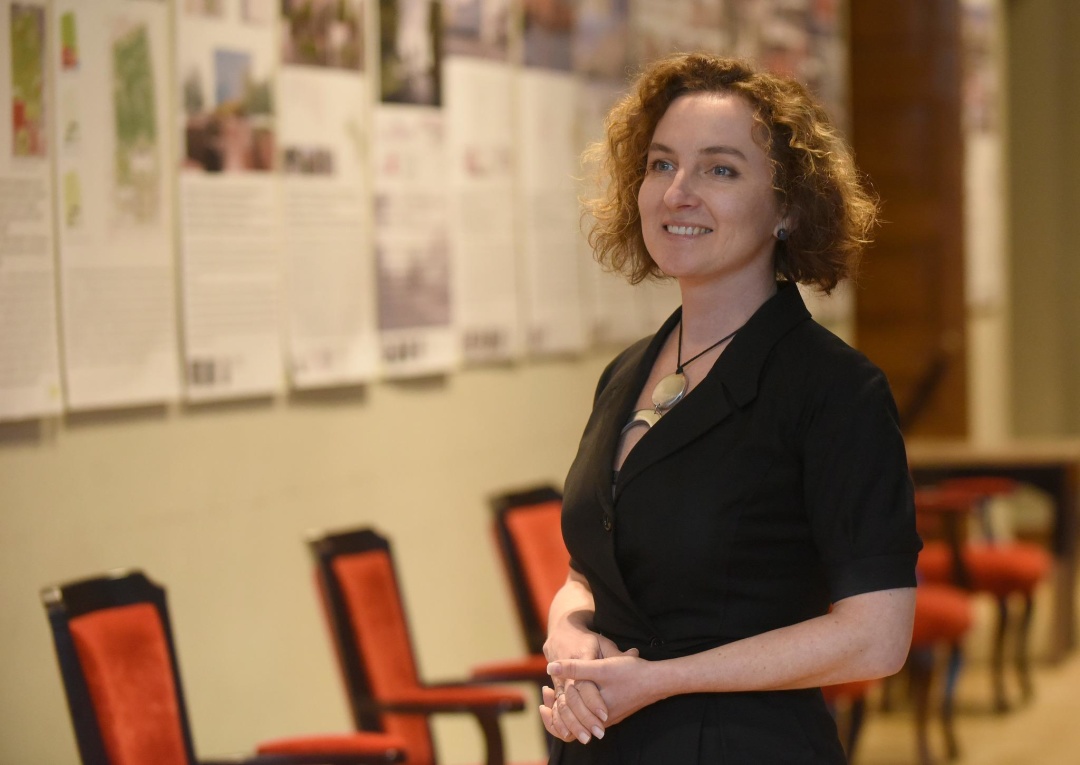
Architect Anna Kyriy said: "When we talk about typical schools, it means that no one has even talked to the community. Schools should be different. It depends on the site, the number of students - whether it is a hub lyceum, a junior high school, a middle school or a high school, or a school with some kind of professional orientation. There are many parameters, including the orientation of the building to the cardinal points. It is necessary to announce a competition for a unique school project: for a specific community to meet its specific needs."
Anna also clarifies that the cost of an architectural project barely reaches 1-2 percent of the cost of construction. Therefore, the argumentation for saving on projects sounds strange. The project is being developed to find a high-quality solution that fits the context and conditions of the site and, among other things, will save money during construction.
Meanwhile, the organizers of the School of the Future for Ukraine competition clarify that adaptive reuse architectural design is a set of architectural solutions for building design that includes, to the maximum extent possible, site, interior, and exterior solutions that can be applied regardless of the specific location and can be reused in an adapted form for many different buildings, each time through individual integration and adaptation to the local context.
Valentyna Samchenko, Kyiv
Photos by Ruslan Kanyuka, Volodymyr Tarasov and provided by the competition organizers.

